What is happening here is that the largest communication entity is emerging and is designed to be global in scope. It understands that we will have billions of robotic devices by as early as 2035. I alone expext to see agriculture transition to robotic labor pools much sooner than any expect.
It has taken 70 years for the present industrial agricultural model to be implemented and it is badly flawed. It will be completely replaced everywhere inside perhaps twenty years, simply because robotics allow holistic agriculture.
That alone will demand billions of robots...
How SoftBank ate the world
In
2010, SoftBank Group CEO Masayoshi Son unveiled his 300-year vision for
the future. The company's $100 billion investment arm, the Vision Fund –
is the biggest tech fund in history
Ryan Pfluger / August
On
the morning of July 20, 2017, at the luxurious Prince Park Tower hotel
in Tokyo, Masayoshi Son emerged on stage in front of a packed conference
hall, his diminutive silhouette backlit by bright white lights. Son,
the CEO of Japanese internet, energy and financial conglomerate SoftBank
Group, was dressed simply, as is his habit, in a grey suit and a
striped shirt. He smiled and introduced himself in Japanese.
Son
is known for his fanciful analogies and long speeches. In 2010, his
talk about his “300-year plan for the future” opened with a reflection
on the nature of sorrow, with Son asking rhetorically, “What is the
saddest thing in life? What gives you utmost happiness?” In 2016, he
equated the Internet of Things (IoT) to the Cambrian era’s explosion of
life, comparing the evolutionary advantage conferred to the first
species with eyes to the combination of sensors and AI enabled by the
IoT.
Addressing hundreds of technologists and
entrepreneurs, he compared SoftBank to the gentry of the Industrial
Revolution, a privileged class that invested in technology and science
for the common good. Two months earlier, SoftBank had launched a $100
billion investment arm, the Vision Fund – the biggest tech fund in
history. In Son’s metaphor, the Vision Fund was the gentry of the
information revolution. “I really don’t want to go to sleep,” he said.
“I don’t want to waste time. These are very exciting times.”
Many of the CEOs in the audience that day were
recipients of the fund’s investment. Without exception, they had all met
Son privately, either in his office in Shiodome, Tokyo, or in his
$117.5 million mansion in Woodside, California. Most describe the
legendary investor – known as Masa – as soft-spoken, a man with a modest
bearing and a prescient vision of the future: a reputation
substantiated by his achievements.
In the 1970s, Son
emigrated to America to study. At the time, he had only a rudimentary
knowledge of English, and made his first million by importing Japanese
arcade games such as Space Invaders. It was Son who, in 1996, offered
budding entrepreneur Jerry Yang, then CEO of a struggling startup called
Yahoo!, $100m in investment. His insight paid off. By 2000, Yahoo! had
become the dominant web search engine in the pre-crash era of the
internet.
That was the year Son met a young Chinese
teacher and founder of an e-commerce firm called Alibaba. He told Jack
Ma to accept $20m in investment, with the promise that he would
transform Ma’s company into the next Yahoo! Today, when Son makes a new
investment, he sometimes tells founders that they too can be as big as
Alibaba, as big as one of the biggest companies in the world. “In 2000,
he already knew that China was going to be big so he just decided to
invest,” Eugene Izhikevich, CEO of the AI startup Brain, says. “After
the dot.com bubble collapse, he was investing in China. You had to drive
on a dirt road between Hong Kong and Shenzhen. He has a gift of seeing
things before they become reality. What’s obvious to him becomes, ten
years later, obvious to everyone else.”
At the event
in Tokyo, Son proceeded to introduce CEOs to the stage. First, he
welcomed the founder of robotics company Boston Dynamics, Marc Raibert, a
man who wants to change the world by building robots with biomechanical
abilities superior to those of humans. (SoftBank bought the company
from Alphabet for an undisclosed sum.) Raibert brought with him Spot
Mini, a four-legged robot that promptly started demonstrating its
locomotor skills. “Masa, I think you may have to back up because you’re
in the way,” Raibert warned Son. “We don’t have it detecting people
yet.” Raibert finished by stating his belief that “robots will be bigger
than the internet”, and thanked SoftBank for backing him up. Son
thanked him in return and said: “We’re going to change the world
together. We’re going to put lots of AI into robots.”
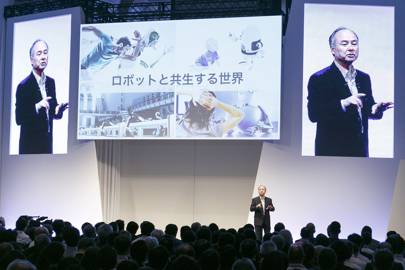

Masayoshi Son addresses entrepreneurs in 2017
Splash News
Next was Greg Wyler, founder of OneWeb, who pointed out
that, for all the talk about a hyperconnected future, the reality is
that 54 per cent of the planet had no access to the internet. He
detailed his plan to deploy 900 non-geostationary satellites that
would ensure the remotest corners of the world would have access to the
internet by 2027. As he finished, Wyler thanked SoftBank for its
support. “We’re going to change the world, we’re going to connect
everybody into this internet,” Son responded as he accompanied him off
stage.
Artificial intelligence – and its accessory
components of ubiquitous data, high-speed connections and autonomous
robots – was the common denominator between the speakers that day: Helmy
Eltoukhy, chief executive of Guardant Health, wanted to conquer cancer
with data; Matt Barnard, founder of indoor farming platform Plenty, was
using machine learning to grow plants in an optimised environment; and
Bill Huang, the entrepreneur behind startup Cloud Minds, wanted to build
the world’s first cloud-based robot. “All of a sudden we could help
guide a blind person with sensors,” he proclaimed. “We can replace guide
dogs!”
Before the final talks, Son took to the stage
again and reminisced: “When I was 17 years old, the very first time I
saw a photo of a microprocessor made me cry. I was overwhelmed.” He then
introduced Simon Segars, the CEO of British chip-design firm Arm
Holdings. “Our first processors were the size of a shirt button,” Segars
began. “Now we can deliver thousands of times more processing power
with a chip the size of a pinhead.” Arm microprocessors were being used
in robotic surgery, autonomous vehicles and smart cameras, but the AI
future would be unrealistic – too power-hungry and beset by time lags –
if all that data had to be sent to the cloud for processing and then
back. “If every person with an Android does three minutes of voice
recognition a day, Google would have to double their data centres,”
Segars said. The next generation of microprocessors would have to
incorporate AI and process data on the sensor itself. “We can’t do it on
our own,” he told the audience. “We have to work together in
partnership with other companies to deploy these technologies.”
At
the end of the talk, Son shook Segars’ hand. He said that Arm is
indispensable not just to SoftBank, but to the whole of humankind. “And
now they are a member of our family,” Son continued, turning to the
crowd.“If we can join forces, we can be the gentry of this new
generation, making the future a better place to live.” He then bowed and
left the stage.
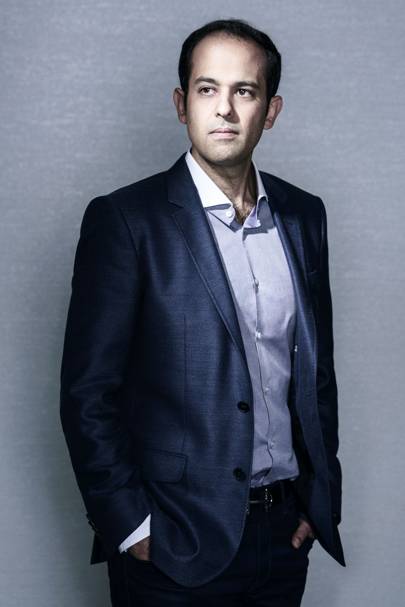

Helmey Eltoukhy, chief executive of Guardant Health
Benedict Evans
Son
has obsessively been trying to make SoftBank the world’s biggest company
since the day he founded it in 1981, as a PC software distributor
(SoftBank stands for Bank of Software) – the day when he, a 24-year old
entrepreneur, stood on a crate in front of his two employees and
excitedly promised that one day they would be the greatest in the world.
Those employees quit a few days later, but Son, now 61, relentlessly
pursued his ambition, his “300-year vision”: a technology revolution
that will ultimately culminate in the singularity, a point in history
where AI supersedes human intelligence and redefines every single
industry in the global economy.
In that version of
the future, SoftBank won’t be the next Google, the next Apple, or the
next Microsoft – Son doesn’t believe that one brand or one business
model could ever be capable of delivering the singularity. What will do
so is what Son calls the “cluster of number ones” strategy: a
SoftBank-led ecosystem of AI companies, spanning all industries from
healthcare to transportation, from ride-hailing to robotics, a diversity
that underpins the Vision Fund’s investment portfolio.
“We want to form a coalition of like-minded
comrade entrepreneurs,” Son told the audience at the 2017 conference. “A
revolution can never be realised with the power of one.” And at the
centre of that ecosystem is the company that designs the small,
low-power processors present in 95 per cent of all smartphones, not to
mention most smart speakers, health trackers, drones and TVs: Arm
Holdings.
Son became familiar with Segars in 2006,
when he first met the then CEO of Arm, Warren East, and Segars was one
of the firm’s first employees. At the time, Arm already enjoyed a
dominant stake in the nascent mobile market. This fact alone impressed
Son. He knew that mobiles would soon outperform PCs, and as a result the
internet’s centre of gravity would move from desktops to the
smartphone. Son envisaged that the low-power, high-processing
architecture of the Arm microchips would be the centre of the future
digital economy.
That insight was behind SoftBank’s
acquisition of Vodafone Japan, a struggling mobile carrier beset by
connectivity issues and unfashionable handsets, a few weeks prior to his
meeting with the Arm executives. SoftBank’s board had been sceptical
about the acquisition, but Son was adamant. Besides, he had a strategic
advantage. Prior to the acquisition, Son had travelled to California to
meet Steve Jobs. He brought with him a hand-drawn sketch of a smartphone
and showed it to the Apple CEO. (“It looked like a toad with the
battery stuck out,” Son said in a 2016 interview with The Nikkei.) Jobs
hated the ugly sketch but he told Son that his intuition was right. Jobs
had been developing the first prototypes of the iPhone. Son left from
the meeting with a commitment that, in case the Vodafone acquisition
went ahead, he would be granted an exclusive deal to distribute the
iPhone in Japan.
Segars and Son kept in contact,
meeting a couple more times in 2006, then again in 2014 and 2015. By the
time Segars replaced East as chief executive in 2013, Arm – just as Son
predicted – had consolidated its marketshare in the chip industry,
licensing its product to Apple, Samsung, Nvidia and Qualcomm. And as Son
determined, Vodafone Japan (now SoftBank Mobile) had become one of
Japan’s leading mobile companies – thanks to its exclusivity deal with
Apple’s iPhone.
In June 2016, Segars met Son for
dinner at the latter’s mansion in California. Segars would later
describe it as the most important job interview of his life. He just
didn’t know it at the time. During that meeting, Segars shared with Son
the dilemma that he was facing at Arm – but noted that it also presented
multiple huge opportunities. With the smartphone market saturated and
growth margins reduced, Arm would have to significantly lower profit
margins in order to make long-term investments in areas such as AI,
sensors, 5G and autonomous vehicles. “We had to have tough
conversations with our stakeholders,” Segars says. “I remember being
asked why all our margins were going down, and explaining that we’re
investing in the long-term opportunities. I still vividly remember the
look of shock on one guy’s face.”
A few days after their meeting, Son called
Segars: “I need to speak to your chairman as soon as I can.” “I’m sorry,
It’s not going to happen,” Segars replied. Arm’s chairman, Stuart
Chambers, was holidaying on a yacht in the Mediterranean. But Son
insisted: “No, no, no. You’ve got to make this happen. I am going to fly
you out. Get into the nearest port, I will fly you there and I will fly
out – and we will have this meeting.”
They met at
The Pineapple, a seafood restaurant on the marina in Marmaris, on the
Turkish riviera. Son had booked out every table – when Segars and
Chambers arrived, there was no one inside apart from the waiters. When
Son arrived, he sat down and told the British executives that he wanted
to buy Arm, and made them a series of promises: the company would remain
an independent subsidiary of Softbank; he wouldn’t interfere in the
day-to-day management of Arm; and the company would be allowed to invest
all the profits into research and development.
“I
was trying to play it as cool as I possibly could,” Segars recalls. “We
listened and you do what you’re supposed to do, which is not agree to
anything, say as little as possible.”
Segars and
Chambers returned to Cambridge and relayed the offer to the Arm board.
In a week, a price was agreed; due diligence was concluded in just two
weeks; the whole process took ten weeks. “To acquire a FTSE 100 company
in that short period of time was breathtaking,” says Ian Houghton, the
vice-president of investor relations for Arm. Rene Haas, the president
of Arm’s Intellectual Property Group agrees: “These processes can drag
on for years, but this was crazy fast. They were like, ‘Let’s go, let’s
go, let’s go. Move this thing.’ It went literally at the speed of light.
I don’t think physics would’ve allowed it to go any faster in terms of
regulatory laws that had to take place. It went down about as fast as it
can possibly go.”
One Sunday, Arm’s executive
committee, which up to that point had not been privy to the ongoing
negotiations, received a text message from Segars convening a meeting
that evening. “I did what Simon told me not to do and I texted another
member of the exec committee who was due at the meeting,” says Haas. “We
were all like, ‘Simon is resigning? We had no idea.’” That evening the
Arm executives met in the company boardroom. As well as beer and crisps,
Segars served up a revelation. “The cat is out of the bag,” he told
them. “Tomorrow it will be formally announced that SoftBank has bought
Arm.”
To many of those in the room, the announcement
made no sense. Why would SoftBank, a Japanese telco, buy Arm, a chip IP
licensing firm? “I was thinking: who’s this Masa guy?” Haas recalls.
“What is he about? Does he really understand what we do? I went home and
googled SoftBank and Masa.”
On Monday, July 18,
2016, Son started the day with an early meeting with then British
Chancellor of the Exchequer, George Osborne. Following the Brexit
referendum the month before, the government was apprehensive about a
foreign takeover of what was the UK’s most valuable technology company.
Son agreed a post-offer undertaking – a series of legally binding
promises to the UK’s takeover panel that, in the next five years,
SoftBank would double the headcount and keep the headquarters in
Cambridge.
That morning, the announcement of the
acquisition was made: Arm had been bought by SoftBank for the price of
£17 a share – £24 billion in total. Hermann Hauser, who had been
involved in the early days of Arm and is regarded as one of the UK’s
most influential entrepreneurs, told the BBC it was a “sad day” for
British tech.
That afternoon, Son travelled to
Cambridge to meet the members of Arm’s executive committee. “He was
beaming like a kid who just got a new toy,” Haas remembers. “He was
saying, ‘This is the most exciting day of my life. I have been watching
this company for 30 years. I’ve just been so impressed with everything
the company’s done.’”
A month later, Arm’s executive
team travelled to San Carlos, California, to meet Son and their
counterparts at SoftBank International. The British kicked off the
meeting with a presentation about revenue plans and forecasts for the
next four quarters. “He couldn’t be less interested,” Haas says. “He was
playing on his iPad.” However, when they started talking about the
vision for the company, Son grew enthusiastic and he shared his own
300-year vision. By 2035 there will be a trillion connected devices, he
said – a vast Internet of Things of autonomous vehicles, smart robots
and artificially intelligent sensors, and Arm would be the company
behind all these devices. “He was literally showing revenue charts and
numbers out to 2035,” Haas says. “I remember thinking that very first
time, ‘Is this theatrics?’ But now I realise he just thinks in a really
big way. And you start thinking that if you can possibly pull all this
off, it’s actually crazy.”
Jean Liu, president of DiDi. SoftBank and DiDi have partnered to launch a taxi-hailing service in Japan
Trunk Xu
The
acquisition of Arm was Europe’s biggest ever technology deal. It also
marked the moment that many people in Britain, including business and
technology insiders, had first heard of SoftBank. That this relatively
unknown Japanese telco was in fact a heavyweight global investor came as
a revelation to most, despite its run of big-ticket purchases. In 2013,
SoftBank acquired US telco Sprint for $22.2 billion, and Finnish games
developer Supercell for $1.5 billion. In 2014, it had launched an
investment outpost in California – a precursor to the Vision Fund called
SoftBank International, which had made early investments in companies
such as ride-sharing startups DiDi in China and Ola Cabs in India, and
Tokopedia, an Indonesian e-commerce company that currently has 80
million users. “We were a bit under the radar,” David Thévenon, a
partner at SoftBank, says. “People were always confused by the name
SoftBank. ‘Are you a bank? Are you a mobile operator?’ We had to keep
explaining that we had been doing international investments for years.”
And
once SoftBank was finally a recognisable name there was a new
complication: it needed more money to keep investing. Finding a solution
for that problem was the remit of a former Deutsche Bank debt trader by
the name of Rajeev Misra.
Misra grew up in New
Delhi. In 1981, he enrolled at the University of Pennsylvania to study
mechanical engineering and computer science. He then worked at Los
Alamos designing satellites, and on software simulations at a
Philadelphia-based startup called Reality Technologies, before returning
to business school. Misra met Son in 2002, when he was global head of
credit, emerging markets at Deutsche Bank. He lent money to SoftBank and
then helped it to structure the complex takeover of Vodafone Japan.
They re-connected eight years later at a wedding in the summer of 2014.
Alibaba – the company in which Son had invested $20m in 2010 – had
recently pulled off the largest IPO in history. The windfall allowed
SoftBank to expand globally, and Son wanted Misra to work for him again.
“I didn’t know exactly what I was going to do, but it sounded
exciting,” Misra recalls.
To buy the British company,
SoftBank was forced to sell shares in Alibaba and Supercell; the whole
deal pushed the Japanese company’s debt to $105 billion. “We wanted to
make investments in the AI revolution that was coming, and in all these
companies going to disrupt every industry on the planet,” Misra says.
“Financial services, cars, hotels, office space, residential brokerage,
you name it. We felt we were restricted because we spend a lot of money.
We said, let’s raise money. Let’s become the biggest investment fund on
the planet.” Masa called it the Vision Fund.
The investment hypothesis underpinning the
Vision Fund centres around scale: a winner-takes-all strategy. They
targeted companies with 50 to 80 per cent market share, and
over-invested to enable these companies to grow fast and globally.
“That’s something I learned from Masa,” Misra says. “Is it more
important to grow fast or to be efficient? Efficient means getting your
costs right and your profits right. It’s not about counting the number
of dollars that you spend on stationery that’s important, and building
step by step in the US or in India. Our view is that companies need to
scale first. Once you scale, you’ll get everything else right. The
global barriers are coming down, so if you don’t become global fast,
someone else will do it.”
And for that, of course,
they were going to need capital – and lots of it. Initially, the fund
was going to start with $30 billion – a huge sum, but not unheard of
among global funds. That was until Masa
decided that $100 billion would be better.
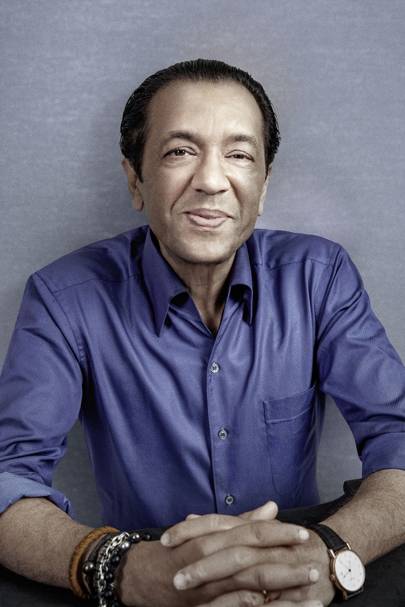
decided that $100 billion would be better.

Rajeev Misra, CEO of the $100 billion SoftBank Vision Fund
Jake Chesum
Misra and Son put together a presentation that showcased
the fund’s investment track record – it’s portfolio at the time already
included Arm, Sprint, SoftBank Mobile, Alibaba and Yahoo! Japan – and
honed their sales pitch. In 2016, between September and December, they
travelled the world, meeting companies in the US, pension funds,
sovereign wealth funds in Asia and the Middle East. Though politely
received, their proposal was mostly met with disbelief, with $100
billion for a single investment fund being viewed as a totally
unrealistic sum to attempt to raise, regardless of ambition.
However,
in spite of the broadly sceptical reception, a few were intrigued by
SoftBank’s proposition. One such person was Mohammed bin Salman, the
Crown Prince of Saudi Arabia.
A 500-strong Saudi delegation visited Tokyo in
May 2017. Before meeting Bin Salman, Son and Misra first pitched the
idea of the Vision Fund to the prince’s closest advisers, introduced by
two former colleagues of Misra’s at Deutsche Bank. A few days later,
they received the Crown Prince at the palatial Geihinkan state
guesthouse in central Tokyo. According to an interview Son gave to
financier David Rubenstein later that year, Son told Bin Salman: “I want
to give you a Masa gift, the Tokyo gift, a $1 trillion gift.” Bin
Salman responded: “OK, now it’s interesting.” Son replied: “Here’s how I
can give you a $1 trillion gift: you invest $100 billion in my fund, I
give you a trillion.” Son left the meeting with a non-binding commitment
of $45 billion over the next five years.
Six weeks
later, the two men met again in Riyadh, the Saudi capital. Son visited
Aramco, the state oil company, and spent time with the executives of the
Saudi sovereign wealth fund. By then Apple, Qualcomm, Foxconn, Sharp
and Abu Dhabi’s Mubadala had also committed a further $20 billion, and
SoftBank added $28 billion from its own balance sheet. A signing
ceremony in Riyadh was held in May 2017 to coincide with Donald Trump’s
first overseas trip as US president – and the $100 billion Vision Fund
was officially launched.
SoftBank, which had never
managed third-party money at this scale and had never launched a
regulated fund, now owned the biggest investment fund in history, equal
to all the money raised by US VCs in the previous 30 months. The fund’s
CEO, Rajeev Misra, was under pressure. “We now had fiduciary
responsibility to all these companies, to our partners, to the people of
Saudi Arabia. And did we get the first call for someone looking for
capital two years ago?” Misra recalls. “No.”
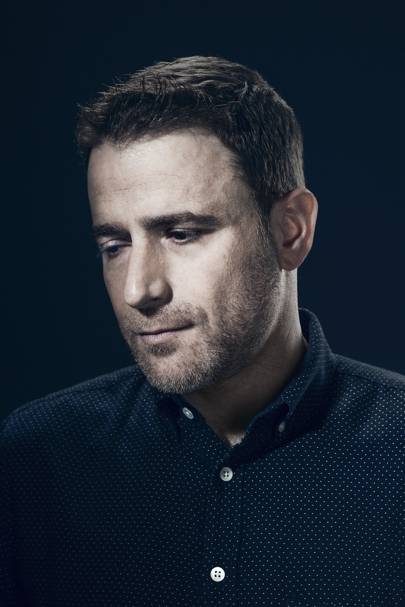

Stewart Butterfield co-founder of Slack, in which SoftBank took a $250m stake
F. Scott Schafer
One
afternoon in December 2018, Misra welcomed Wired to the headquarters of
the Vision Fund, in a four-storey Edwardian building in London’s
Mayfair. He was barefoot and had rolled up his shirt sleeves, revealing a
Shamballa bracelet on one wrist. During the conversation, his mood
shifted between enthusiastic and pensive, at which point he would pause
and puff on an electronic cigarette.
Currently, Misra’s Vision Fund has a portfolio
of more than 60 companies. This includes an estimated $7 billion stake
in US graphics processor manufacturer Nvidia; a $502 million stake in
British startup Improbable, which develops large-scale virtual reality
worlds for gaming and training; and a $250m stake in the productivity
platform Slack. A consortium led by SoftBank has also invested around $8
billion in Uber.
Misra heads a team of managing
partners – seven of them based at the fund’s Silicon Valley outpost, two
in Japan, and two in London – who scrutinise dozens of companies weekly
in search of potential opportunities for investment. They come together
on a regular basis to collectively review the spread of deals presented
by individual partners.
These ideas are then
peer-reviewed, with due diligence being undertaken by an independent
team in a rigorous vetting process that can take months to complete. At a
later stage, the deals are submitted to SoftBank’s Investment Advisor
Committee, which includes Son and Misra. If there is consensus about an
idea, the entrepreneur is then invited to sit down with Son, who meets
every single founder before a deal is closed.
“When I
met him, in early 2017, I explained how my company had become a leading
hotel company in India,” says Ritesh Agarwal, chief executive officer
of Oyo Rooms, India’s largest hotel network. “I didn’t think the timing
was right to expand to China. He told me that I should absolutely expand
to China – and consider spending a lot of time there. In November, we
set up our first hotel in Shenzhen. We are now among the top five hotel
chains in China. His ability to think far ahead is unparalleled.”
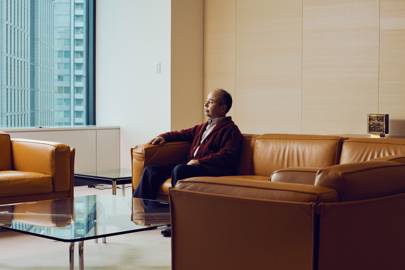

Ryan Pfluger / August
The lower limit for a Vision Fund investment is
$100 million, but most are between $500 million to a few billion,
typically for 20 to 40 per cent of the company. “It’s changed the game
for investing in a dramatic way,” Michael Marks, CEO of the US
construction startup Katerra, observes. “Tech companies are becoming
billion-dollar businesses. I think that SoftBank was just the first to
see that it could deploy much more capital and get big returns. It
over-invests to anoint the winners. It may turn out it’s a colossal risk
and doesn’t work out, but I think it will. It’s a fascinating
experiment,” Marks says.
Of course, investments
alone and the abundance of capital don’t reveal the true nature of
SoftBank’s underlying strength: Son’s “cluster of number ones” strategy,
the complex network of affiliated and portfolio companies whose whole
is theoretically greater than the sum of its parts – an added value
derived from the partnerships and business opportunities that come with
being a part of the SoftBank family.
This is a global
network that includes Apple, Qualcomm, Sharp, Alibaba, Sprint (the
fourth-largest carrier in the US), Yahoo! Japan (which, unlike its US
parent, remains the most popular website in its country) and SoftBank
Mobile, whose $23.5 billion IPO last December was the second biggest
market listing of all time. The Vision Fund is also one of the biggest
foreign investors in India, China and Europe. It has a presence in
Mumbai, Singapore, Riyadh and Abu Dhabi. “When you think about
investment, when you look at most of the American firms, they don’t do
global, very few of them do true global stuff,” Thévenon says.
“SoftBank, however, is everywhere.”
Companies have
autonomy to pursue these partnerships, but these are often win-win
synergies that can accelerate growth globally. Consider the example of
Ping An Good Doctor, an AI provider of first-line healthcare, which
signed an agreement with south-east Asian ride-sharing company Grab. In
China, a trip to the doctor can last three hours for only 90 seconds of
consultation, so Ping wants to use Grab’s geolocation platforms to
accelerate the initial triage and screening process of patients.
Oyo
Rooms, has, through deploying a machine learning platform, managed to
standardised its hotel experience globally – from tech-enabled check-ins
to housekeeping. It ran a partnership campaign with DiDi in China using
the slogan: “Ride comfortably with DiDi and stay comfortably with Oyo.”
Paytm, an Indian mobile wallet startup that
processes 450 million transactions a month, recently launched PayPay in
Japan with Yahoo! Japan.
And then, of course, there
is Arm. In collaboration with Mapbox, Segars’ chip-design firm has
already developed software that allows Arm-enabled devices automatically
to classify road boundaries, lane markings, curbs, crossings and
traffic signs. Boston Dynamics is also deploying Arm processors in the
motor control of its latest robots.
These are the
sorts of partnerships SoftBank has fostered, and they will allow Arm to
remain at the centre of gravity of Son’s vision of the singularity,
enabling a future that is populated by robots, drones, autonomous
vehicles and a trillion connected devices.
“I think
another very common theme that runs through all of our investments is
really around data,” Jeffrey Housenbold, a managing partner at the
Vision Fund, says. “It’s really about data and the merger of human and
machine in this notion of the singularity and artificial intelligence.
How do we process that data in order to make the world a better place –
to make people happier, to enrich their lives, to provide better
products and services? It doesn’t matter if it’s by using data to enable
drug discovery or trying to make food delivery more efficient. Data
runs across almost every one of our companies.”
That’s
Masayoshi Son’s vision: a future where every time that we use our
smartphone, or call a taxi, or order a meal, or stay in a hotel, or make
a payment, or receive medical treatment, we will be doing so in a data
transaction with a company that belongs to the SoftBank family. And, as
Son likes to say: “Whoever controls data controls the world.”
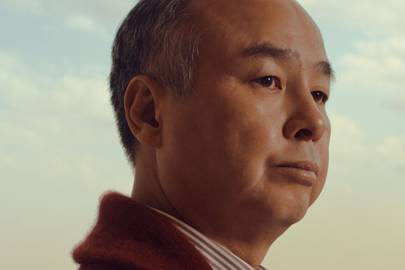
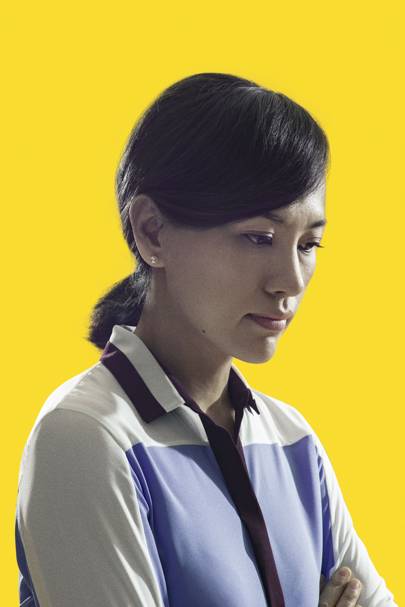











No comments:
Post a Comment